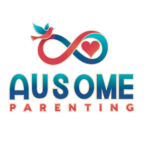Every child has a unique voice waiting to be heard. For families of children with autism, early intervention speech therapy opens the door to a world of communication, connection, and possibility. Let’s explore how this powerful support system is changing lives and giving hope to families across the country.

The Journey Begins: Understanding Early Speech Therapy for Autism
When three-year-old James first started speech therapy, he rarely made eye contact and struggled to express his basic needs. His mother, Sarah, remembers those early days vividly. “It felt like we were living in parallel worlds,” she shares. “I knew my son had so much to say, but we just couldn’t find the bridge between his world and ours.”
James’s story reflects the experience of many families. With current CDC data showing 1 in 36 children diagnosed with autism spectrum disorder (ASD), the need for early intervention has never been more crucial. But what makes early intervention so transformative?
Breaking Through: How Early Intervention Creates Change
Dr. Maria Rodriguez, a leading speech-language pathologist specializing in autism support, explains it beautifully: “The early years are like golden windows of opportunity. The brain is incredibly adaptable during this time, eager to form new connections and pathways for communication.”
This adaptability, known as neuroplasticity, makes early intervention particularly powerful. Through consistent, specialized therapy, children develop not just speech, but a full range of communication tools that serve them throughout their lives.
The Power of Early Support: Emily’s Story
Consider Emily, who began speech therapy at 18 months after her parents noticed she wasn’t babbling like other children her age. Her therapist, using a combination of play-based techniques and structured activities, helped Emily discover her voice in ways that felt natural and fun.
“We didn’t just work on words,” explains Emily’s therapist. “We built foundations for communication through play, music, and movement. Every smile, every gesture, every sound became a building block for future success.”
Beyond Words: The Full Impact of Early Speech Therapy
Early intervention goes far beyond teaching children to speak. It creates ripples that touch every aspect of a child’s development:
Building Social Connections
When five-year-old Marcus learned to express his feelings through a combination of words and picture cards, his whole world opened up. His preschool teacher noticed how he began joining other children during playtime, something he had never done before.
Reducing Frustration
“The tantrums didn’t just magically disappear,” shares Marcus’s father, “but when he could tell us what he needed, even with simple words or gestures, everything became easier. It was like finally having a map in unfamiliar territory.”
Understanding the Therapy Journey: What Parents Should Know
Every family’s path through early intervention speech therapy is unique, but understanding the general roadmap can help set expectations and ease anxieties.
First Steps: The Assessment Process
Lisa Martinez remembers feeling overwhelmed when she first sought help for her son Miguel. “I didn’t know what to expect,” she recalls. “But our speech therapist made the process so much clearer than I imagined.”
A comprehensive assessment typically involves:
Jessica Chen, a veteran speech-language pathologist, takes us through the process: “We start by observing how the child naturally communicates. We look at their interaction with parents, their response to different environments, and their current communication strategies. It’s like putting together pieces of a puzzle to create the most effective therapy plan.”
Creating a Personalized Path
“No two children with autism are exactly alike,” explains Dr. Robert Thompson, director of early intervention services at Central Children’s Center. “That’s why we customize every therapy plan to match each child’s unique needs, interests, and family dynamics.”
Take Noah’s story, for instance. His fascination with trains became the cornerstone of his therapy sessions. His therapist incorporated train-themed activities into their work, using his natural interest to build communication skills. What started as simple train sound imitations evolved into full sentences about his favorite engines.
Making Therapy Work: Real Strategies for Real Families
The Home Connection
The most successful early intervention programs extend beyond therapy sessions into daily life. Lauren Peterson, mother of 4-year-old Sophia, shares her experience: “Our therapist taught us how to turn everyday moments into opportunities for communication. Bath time, meals, even getting dressed became chances to practice and grow.”
Effective home strategies might look like: “During dinner, we practice taking turns talking about our day,” Lauren explains. “It started with simple gestures and single words, but now Sophia tells us complete stories about her preschool adventures.”
Technology as a Tool
Modern speech therapy has embraced technology in ways that engage children while supporting their development. Alex Thompson, whose son uses a tablet-based communication app, notes: “The app helped bridge the gap between thoughts and words. It gave him confidence to try speaking more.”
Measuring Progress: Celebrating Every Step
Progress in early intervention speech therapy often comes in waves rather than a straight line. Amy Wong, whose daughter Rebecca has been in therapy for two years, describes it beautifully: “Some days felt like we were standing still, but when we looked back over months, we could see how far we’d come. Every new word, every attempted conversation was a victory worth celebrating.”
Signs of Success
Success looks different for every child, but common milestones include:
As Rebecca’s therapist explains: “We celebrate every form of progress, from increased eye contact to new sounds, to full sentences. Each step forward builds confidence and motivation for the next challenge.”

Looking to the Future: Long-term Benefits
Research consistently shows that early intervention creates lasting positive impacts. Dr. Sarah Matthews, who has followed children through their therapy journeys for over a decade, shares: “The children I worked with in early intervention are now teenagers. Many are thriving in ways their parents once worried might not be possible.”
Building Independence
The skills developed through early speech therapy continue to serve children as they grow. Take Michael’s story: Starting therapy at age 2, he initially struggled with basic communication. Now 12, he confidently participates in school debates and recently gave a presentation about autism awareness to his class.
Supporting the Journey: Resources for Families
Finding Your Support Network
Creating a support system is crucial for families navigating early intervention. Local parent groups, online communities, and professional organizations can provide valuable resources and emotional support.
Maria Garcia, who leads a parent support group, emphasizes: “Connecting with other families who understand your journey can make all the difference. We share experiences, strategies, and hope.”
Access and Advocacy: Breaking Down Barriers
The Reality of Resources
Maria Hernandez knows firsthand the challenges of accessing early intervention services. Living in a rural community, the nearest speech therapist was over two hours away. “It felt impossible at first,” she admits. “But we found solutions we never knew existed.”
Like many families, the Hernandezes discovered telehealth services. “Virtual speech therapy sessions changed everything for us,” Maria shares. “Our son Thomas could receive consistent support without the long commute, and we learned how to better support his progress at home.”

Financial Navigation
The cost of speech therapy shouldn’t prevent any child from receiving essential early intervention. Susan Chen, a healthcare advocate, guides families through their options: “Many parents don’t realize the range of financial support available. From insurance coverage to state programs, there are multiple paths to accessing quality care.”
Available support options often include:
“When I first learned about my insurance coverage, I felt overwhelmed by the paperwork,” admits David Park, father of 5-year-old Anna. “But our therapy center’s staff helped us navigate everything. Now Anna receives the support she needs without breaking our family’s budget.”
Innovation in Early Intervention
The Technology Revolution
Modern speech therapy has embraced technological advances while maintaining the human connection that makes therapy effective. Dr. James Wilson, a researcher in autism support technologies, explains: “We’re seeing amazing results with interactive programs that complement traditional therapy methods. These tools give children new ways to engage with language and communication.”
Sarah Thompson, whose daughter uses both traditional and tech-enhanced therapy approaches, notes the difference: “The interactive elements keep her engaged, while the therapist ensures she’s making meaningful progress. It’s the best of both worlds.”
Research and Hope
The field of early intervention continues to evolve, bringing new hope to families. Recent studies show promising developments in:
Dr. Rachel Adams, leading researcher in early intervention outcomes, shares: “What excites me most is how we’re learning to identify and support children earlier than ever before. Every year brings new insights that help us serve families better.”
Making the Decision: When to Start
Recognizing the Signs
For many parents, deciding when to seek speech therapy can be challenging. Amanda Foster remembers her journey: “I kept thinking my son would ‘grow out of it.’ Looking back, I’m so glad we didn’t wait to get help.”
Dr. Michael Chang, pediatric development specialist, offers this guidance: “Trust your instincts. If you have concerns about your child’s communication development, early evaluation can only help. Early intervention doesn’t mean there’s something ‘wrong’ – it means you’re being proactive about your child’s development.”
Looking Forward: A Message of Hope
The Ripple Effect
The impact of early intervention speech therapy extends far beyond childhood. Jessica Miller, now a college student who received early intervention as a toddler, shares her perspective: “The skills I learned in those early years became the foundation for everything else. I learned not just how to speak, but how to advocate for myself and connect with others.”
Building Future Success
Early intervention creates ripples that touch every aspect of a child’s life. As Dr. Elena Rodriguez explains: “When we support communication development early, we’re not just working on speech – we’re building confidence, social skills, and independence that last a lifetime.”
Taking Action: Your Next Steps
Starting Your Journey
If you’re considering early intervention speech therapy for your child, remember these words from veteran speech therapist Karen Williams: “The perfect time to start is now. Every child deserves the chance to find their voice, and it’s never too early to begin that journey.”
To begin exploring early intervention options:
- Trust your parental instincts
- Consult with your pediatrician
- Research local therapy providers
- Connect with parent support groups
- Learn about your insurance coverage
Final Thoughts
Early intervention speech therapy opens doors to communication, connection, and possibility. While every child’s journey is unique, the support and strategies provided through early intervention can make a profound difference in their development and future success.
Remember Sarah and James from the beginning of our story? Today, James is an active third-grader who loves telling jokes and sharing stories with his friends. “Early intervention changed our lives,” Sarah reflects. “It gave James the tools to share his wonderful thoughts with the world, and it gave us the joy of truly knowing our son.”
Remember: Every child’s voice matters, and with the right support at the right time, every child can find their way to express it.
Note: Names and specific details in case studies have been changed to protect privacy while maintaining the authenticity of experiences shared.
FAQ About Early Intervention Speech Therapy for Autistic Children
How early can speech therapy start for autistic children?
Speech therapy can start as early as 18 months, or as soon as communication challenges are identified.
How long does early intervention speech therapy typically last?
The duration varies, but many children benefit from therapy throughout their early childhood years.
Will my insurance cover early intervention speech therapy?
Many insurance plans cover speech therapy for autism. Check with your provider for specific coverage details.
Can early speech therapy “cure” autism?
While there is no cure for autism, early intervention can significantly improve communication skills and overall functioning.
What’s the difference between a speech therapist and a speech-language pathologist?
These terms are often used interchangeably. Both refer to professionals trained to assess and treat communication disorders.
How can I support my child’s therapy at home?
Reinforce therapy goals in daily activities, create a language-rich environment, and consistently practice techniques recommended by your therapist.
Resource List
- Centers for Disease Control and Prevention (CDC) – Autism Data
- Journal of Child Psychology and Psychiatry – Early language study
- American Speech-Language-Hearing Association (ASHA) – Early Intervention
- National Institute on Deafness and Other Communication Disorders – Autism Spectrum Disorder
- ASHA Practice Portal – Autism
- Journal of Autism and Developmental Disorders – Parent Involvement Study
- CDC – Developmental Milestones
- Medicaid.gov – Children’s Health Insurance Program
- Autism Science Foundation – Autism Research
- Temple Grandin’s Official Website


